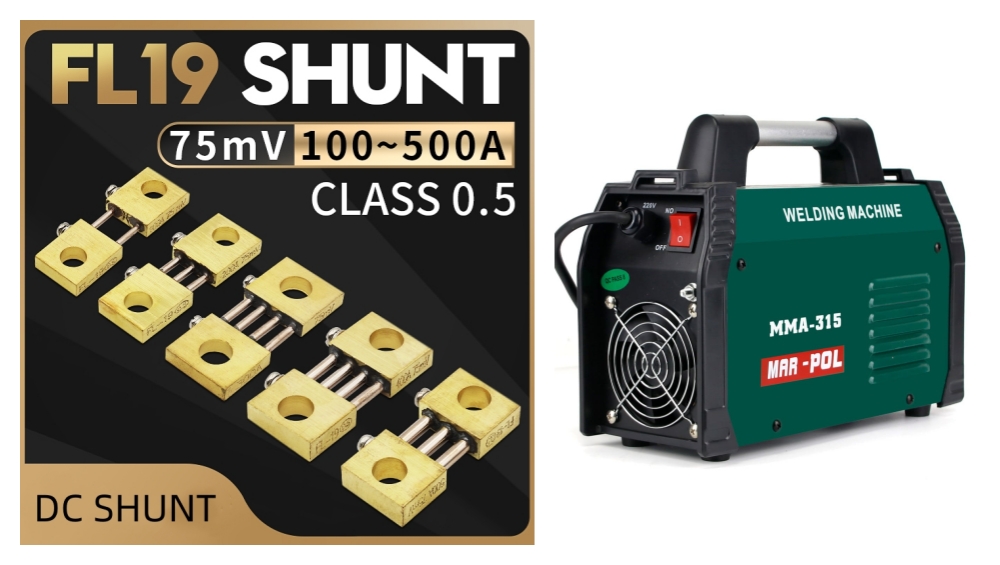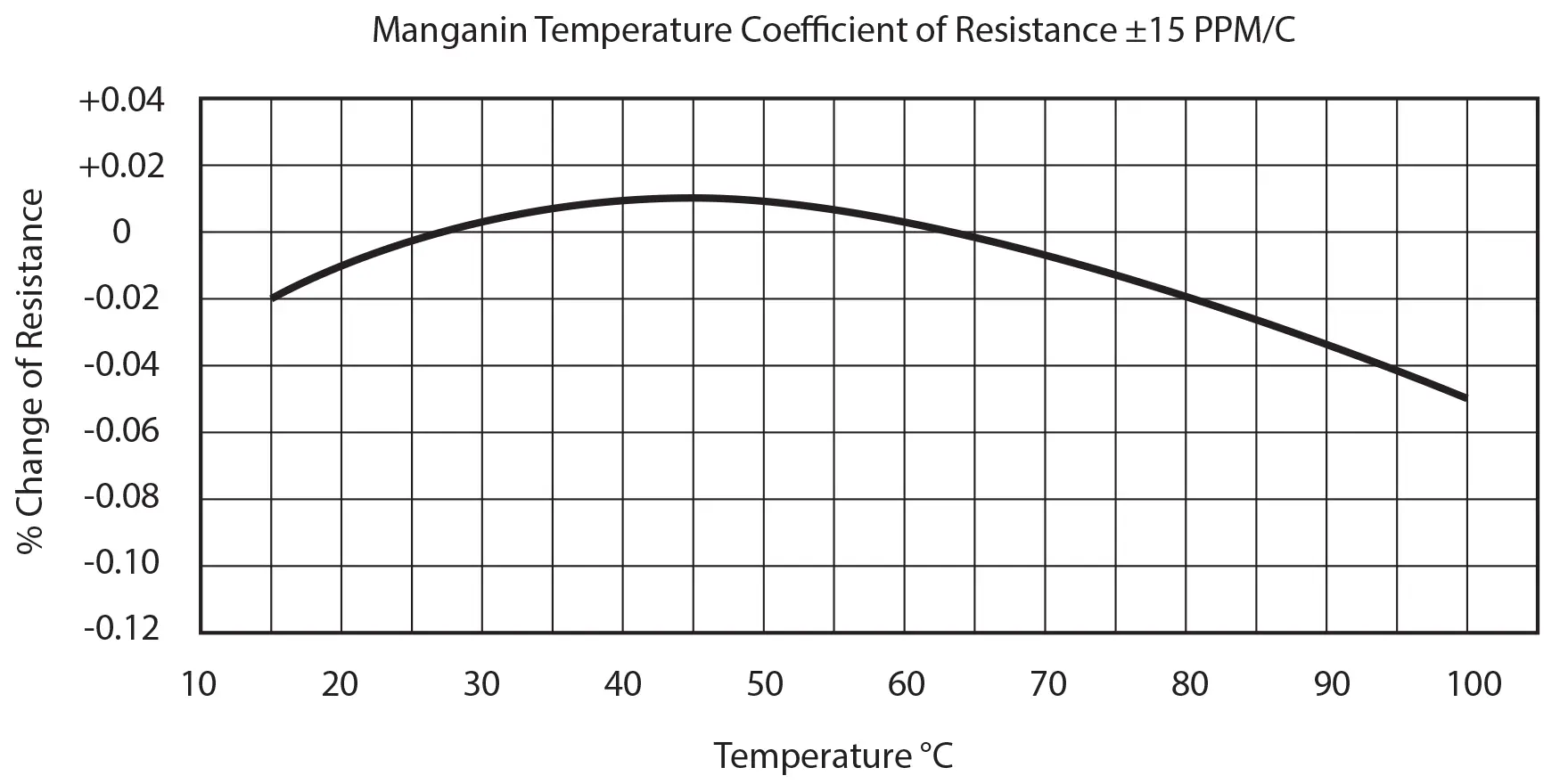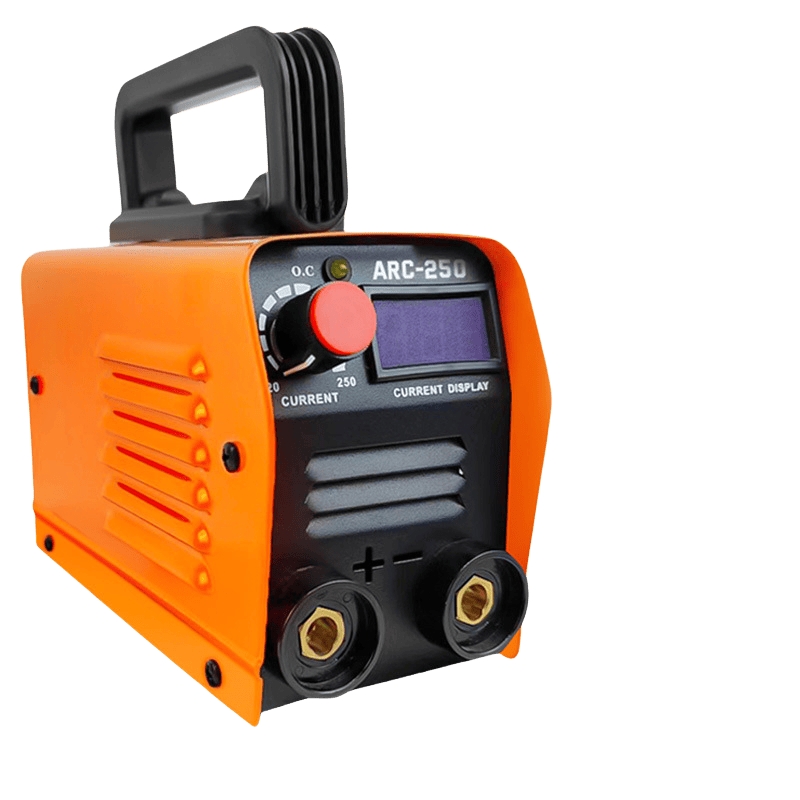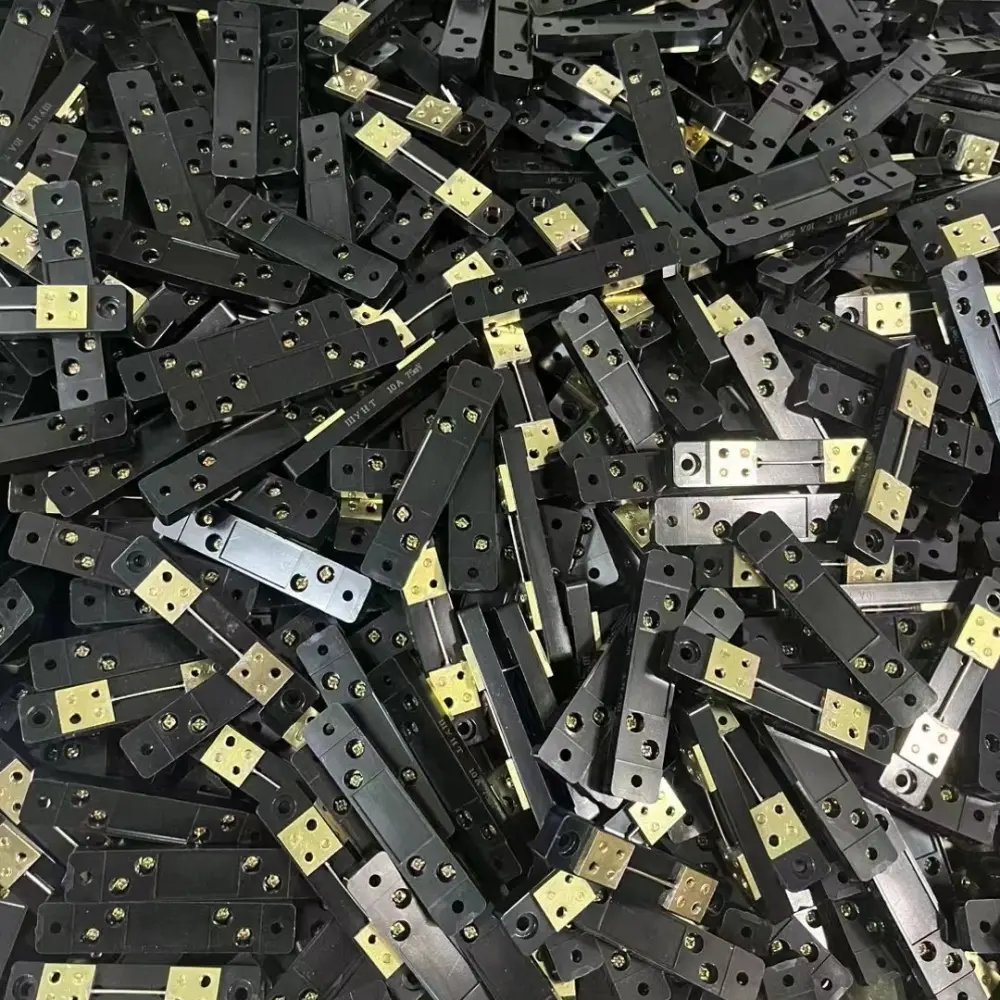In today’s competitive welding equipment market, manufacturers are constantly seeking ways to differentiate their products and deliver superior performance. As welding technologies advance, the components that make up these systems play an increasingly critical role in determining overall quality and reliability. Among these components, DC shunts stand out as fundamental elements that can significantly enhance product performance and customer satisfaction. Let’s dive into the importance of DC shunt integration in welding machines and explore how they can offer manufacturers a competitive edge.
The Evolving Landscape of Welding Machine Current Control
Limitations of Traditional Current Control Methods
Traditional welding machines often rely on simplified current measurement approaches that, while functional, introduce several limitations. But here’s the kicker—these limitations can lead to significant challenges in ensuring accurate and reliable welds:
- Indirect Measurement: Many traditional systems infer current values rather than measuring them directly, which can introduce inaccuracies that impact the final product quality.
- Display vs. Reality Gap: Studies reveal that welding machines often display values 15-30% higher or lower than the actual current output. This discrepancy can lead to inconsistent welds.
- Temperature Sensitivity: Traditional components that lack proper temperature compensation tend to drift as they heat up during operation, causing further measurement inaccuracies.
- Calibration Challenges: Systems without precision measurement components are difficult to calibrate accurately, leading to a lack of consistency in performance.
- Limited Feedback: Basic systems offer minimal real-time data, making it challenging to make adjustments during the welding process.
So, what’s the impact of these shortcomings? They directly affect weld quality, consistency, and customer satisfaction. In an industry where precision can make the difference between structural integrity and failure, these limitations represent significant competitive vulnerabilities.
| Traditional Measurement Limitation | Impact | Resulting Issues |
|---|---|---|
| Indirect current measurement | Inaccurate readings | Reduced weld quality, rework, scrap |
| Display vs. reality gap | Displayed values are misleading | Inconsistent welds, unpredictable results |
| Temperature sensitivity | Drifting accuracy | Poor performance, unreliable operation |
| Calibration challenges | Hard to maintain accurate systems | Inconsistent output, customer complaints |
| Limited real-time feedback | Lack of data-driven control | Limited optimization, less precision |
Modern Welding Machines’ Precision Requirements
With the rapid advancement of welding applications, precision requirements have evolved drastically. Today’s welding demands require much more than basic current measurement. But here’s the real story—without precise control, manufacturers can’t meet the needs of their customers in the automotive, aerospace, and high-volume production industries:
- Automotive Manufacturers: Require consistent and reliable welds for safety-critical components. Even small variations in current can jeopardize product safety.
- Aerospace Specifications: Mandate exact current parameters, with comprehensive documentation to ensure traceability and quality.
- High-Volume Production: Needs reliable, repeatable results across multiple machines, ensuring uniformity in each weld.
- Specialized Materials: Advanced materials, like high-strength steels and aluminum alloys, require precise heat input control to maintain their properties.
- Industry 4.0 Integration: Welding machines now need to provide real-time data for process monitoring and optimization to fit into the smarter manufacturing ecosystems of today.
The increased demand for precision is clear. High-precision DC shunts are emerging as a key technology that meets these challenges by offering accurate current measurement and real-time feedback. Ready for the good part? Let’s explore how DC shunts can be integrated into welding machines for better performance.
| Requirement | Industry | Challenge | Solution |
|---|---|---|---|
| Consistent Welds | Automotive, Aerospace | Safety-critical, consistent results | High-precision current control |
| Exact Current Parameters | Aerospace, Automotive | Regulatory compliance, documentation | Real-time monitoring with DC shunts |
| Repeatable Results | High-Volume Production | Ensuring consistency across machines | DC shunt-based precision feedback |
| Specialized Material Processing | Steel, Aluminum Alloys | Exact heat control required | Accurate current measurement |
| Industry 4.0 Integration | Manufacturing | Smart manufacturing integration | DC shunts with real-time data |
Technical Considerations for DC Shunt Integration
Integrating high-quality DC shunts into welding machine designs requires careful technical planning. Ready for the good part? Let’s break down the key considerations to ensure successful integration and performance.
Design Integration Approaches
There are several ways to integrate DC shunts into welding machines, each with distinct advantages depending on the application:
- Primary Circuit Integration: In this approach, the shunt is placed in the primary power circuit before transformation. This gives an overall view of power monitoring but lacks the precision required for measuring output current.
- Secondary Circuit Integration: Placing the shunt in the output circuit after transformation offers direct measurement of welding current. This is the preferred approach for applications where high precision is required.
- Modular Design: For ease of maintenance, a removable and replaceable shunt module can be designed, allowing flexibility for different current ranges within the same machine model.
- Multi-Shunt Systems: Advanced designs might include multiple shunts that can switch between current ranges automatically, providing optimal accuracy across the entire operating range of the machine.

Electrical Interface and Compatibility
DC shunt integration demands proper electrical handling to ensure optimal performance:
- Signal Amplification: The small millivolt signals from DC shunts require low-noise circuits for proper amplification.
- Common Mode Rejection: Differential amplification is necessary to reduce common-mode noise in high-current environments.
- Isolation: Electrical isolation between power and control circuits is essential to prevent interference and ensure safety.
- ADC Resolution: The analog-to-digital conversion should have sufficient resolution to detect small variations in the current signal.
- Sampling Rate: Fast sampling rates are crucial for detecting transient changes in current that affect weld quality.
Thermal Management and Space Optimization
Physical integration presents its own challenges. But here’s the kicker—if done improperly, it can lead to performance degradation:
- Heat Dissipation: Since DC shunts generate heat proportional to I²R losses, they must be placed in areas that allow for proper cooling.
- Thermal Isolation: The sensitive control electronics must be kept thermally isolated from the shunts to prevent thermal interference.
- Space Constraints: Welding machines require compact designs, so the shunt must be positioned efficiently within the available space.
- Accessibility: Shunts should be placed in areas that are easily accessible for inspection and maintenance.
- Connection Integrity: The mounting design must ensure consistent electrical connections despite thermal cycling and vibrations.
| Integration Consideration | Design Approach | Key Benefits |
|---|---|---|
| Primary Circuit Integration | Placing shunt before transformation | Overall power monitoring |
| Secondary Circuit Integration | Placing shunt in output circuit | Precise measurement of welding current |
| Modular Design | Removable/replaceable modules | Flexibility for different current ranges |
| Multi-Shunt Systems | Automatic switching between multiple shunts | Optimal accuracy across a wide range |
| Signal Amplification | Low-noise circuits for millivolt signals | Ensures clear signal interpretation |
The Business Value of High-Precision DC Shunts
While the technical benefits are obvious, the business case for integrating high-precision DC shunts into welding machines is equally compelling. Ready for the good part? Let’s break down the business value:
Enhanced Product Reliability
Reliability is at the core of customer satisfaction and brand reputation. Here’s how high-precision DC shunts contribute:
- Consistent Performance: Welding machines deliver reliable results day after day, improving long-term customer satisfaction.
- Reduced Field Failures: With accurate current control, there’s less risk of component stress and premature failure.
- Extended Service Life: With precise current regulation, wear on components like contactors and transformers is reduced, extending the service life of the equipment.
- Predictable Outcomes: Customers can rely on consistent results, which fosters trust and loyalty.
- Reduced Troubleshooting: Service teams can quickly verify current flow and diagnose issues, reducing downtime and troubleshooting time.
A manufacturer of industrial welding equipment reported a 47% reduction in service calls after upgrading their product line with high-precision DC shunts, leading to significant warranty cost savings and higher customer satisfaction.
Customer Satisfaction and Brand Reputation
In the competitive market of welding equipment, reputation is everything. High-precision DC shunts enhance brand reputation in several ways:
- Performance Validation: Customers can verify that machines perform exactly as specified, enhancing trust.
- Quality Perception: Using precision components reflects a commitment to quality and reliability.
- Word-of-Mouth Marketing: Satisfied customers become advocates, helping expand the brand’s reach.
- Reduced Returns: Fewer performance issues mean fewer returns, increasing profitability.
- Premium Positioning: Superior performance justifies premium pricing, enabling manufacturers to capture a larger share of the market.
Reduced Warranty Claims and After-Sales Costs
The financial benefits are clear. Here’s how high-precision DC shunts help reduce costs:
- Fewer Warranty Claims: With accurate current control, weld failures caused by equipment issues are minimized.
- Lower Service Costs: Less time spent on field service adjustments, leading to cost savings.
- Reduced Parts Consumption: With fewer parts requiring replacement, the overall maintenance costs decrease.
- Decreased Downtime: Clients experience less production interruption, leading to higher productivity.
- Simplified Troubleshooting: Clear current measurements make it easier to resolve issues quickly.
A mid-sized manufacturer found that implementing high-precision DC shunts across their product line reduced warranty costs by 32% in just the first year, with ROI realized in under six months.
| Benefit | Impact on Business | Result |
|---|---|---|
| Enhanced Product Reliability | Consistent, reliable machines | Fewer failures, higher customer satisfaction |
| Customer Satisfaction | Performance validation, word-of-mouth marketing | Increased market share, fewer returns |
| Reduced Warranty Claims | Fewer performance-related issues | Lower warranty costs, better profit margins |
| Reduced Service Costs | Less field service time | Savings on labor and parts |
| Simplified Troubleshooting | Faster identification of issues | Lower downtime, quicker issue resolution |
Case Study: Successful DC Shunt Integration
Before Implementation
A manufacturer of mid-range welding equipment was facing competitive pressure due to inconsistent performance and customer complaints. Here’s the kicker—current output varied by up to 25% from displayed values, leading to:
- Inconsistent performance during extended operation
- Different machines with identical settings producing varying results
- Limited diagnostics for troubleshooting quality issues
- Declining customer satisfaction scores, especially from industrial users
Integration Process
To tackle these challenges, the manufacturer implemented the following changes:
- Selected FL-19 Series DC Shunts: Known for their 0.1% accuracy class and low temperature coefficient, ideal for precision applications.
- Redesigned Output Stage: Optimized for accurate current measurement with shunts placed in the best positions.
- Upgraded Control Electronics: Enhanced to amplify and process signals from the shunts effectively.
- Software Calibration: Implemented software-based calibration routines to maximize accuracy.
- Real-Time Display: Added digital displays to show real-time current measurements based on shunt feedback.
Results and Market Reception
The results were impressive. The upgraded product line delivered:
- Current accuracy improved to within ±1% of displayed values
- Increased machine-to-machine consistency
- Performance remained stable across prolonged operations
- Customer satisfaction scores increased by 28%
- Successfully implemented premium pricing, which boosted margins
- Market share grew by 12% within 18 months
Feedback from customers highlighted the increased consistency and precision as key factors in their purchasing decisions.
| Before Integration | After Integration | Impact |
|---|---|---|
| Current accuracy ±25% | Accuracy within ±1% | More consistent performance |
| Inconsistent performance | Stable performance | Higher customer satisfaction |
| Low market share | Increased by 12% | More competitive product line |
| Declining satisfaction | Increased by 28% | Enhanced reputation |
Implementation Roadmap
Manufacturers considering DC shunt integration should follow a structured approach to ensure optimal results. Here’s a step-by-step roadmap:
Assessment and Selection
- Evaluate Current Product Performance: Measure actual vs. displayed current across your product line.
- Define Precision Requirements: Establish the accuracy needed for specific applications.
- Select Appropriate Shunts: Consider factors such as current ranges, accuracy class, and environmental conditions.
- Benchmark Competitors: Understand how your upgraded specifications will position your product in the market.
Integration and Testing
- Prototype Integration: Develop and test integration strategies with prototype units.
- Thermal Analysis: Verify that the shunts perform within temperature limits under real-world conditions.
- EMC Testing: Ensure that the measurement circuits are immune to electromagnetic interference.
- Durability Testing: Test the shunts under extended operation and thermal cycling.
- Production Engineering: Optimize the design for ease of manufacturing and maintenance.
Quality Control and Validation
- Calibration Procedures: Develop precise calibration procedures for production lines.
- Acceptance Criteria: Establish clear pass/fail criteria for finished products.
- Documentation: Prepare detailed technical documentation for manufacturing and service.
- Training: Ensure production and service personnel are trained in the new system.
- Field Testing: Perform extensive real-world testing to validate performance in actual customer environments.
Conclusion: Long-Term Competitive Advantage
In the highly competitive welding equipment market, high-precision DC shunts offer a unique opportunity for manufacturers to differentiate their products. By integrating these components, manufacturers can enhance their product’s precision, reliability, and overall performance. The result? Improved customer satisfaction, reduced warranty claims, and a stronger market position.
Investing in high-quality DC shunts not only addresses current market demands but also sets the foundation for future innovations in welding technology. Manufacturers who adopt this technology today will secure long-term advantages in a rapidly evolving industry.
PREGUNTAS FRECUENTES
Q1: What are DC shunts, and how do they improve welding machine performance?
A DC shunt is a precision resistor used to measure welding current. It provides accurate feedback by measuring voltage drops across a calibrated resistance, enhancing welding machine precision and performance.
Q2: How do DC shunts compare to traditional current measurement methods?
DC shunts offer direct measurement of welding current, whereas traditional methods may rely on indirect measurements, which can lead to discrepancies and reduced accuracy.
Q3: What are the primary benefits of integrating DC shunts in welding machines?
Integrating DC shunts improves current accuracy, reduces field failures, increases machine consistency, and extends equipment lifespan, leading to higher customer satisfaction and reduced warranty claims.
Q4: How can high-precision DC shunts reduce warranty claims?
By providing accurate current measurement, DC shunts reduce the likelihood of weld failures, which in turn minimizes warranty claims and after-sales service costs.
Q5: What steps should manufacturers take to integrate DC shunts effectively?
Manufacturers should assess current product performance, select the appropriate shunt models, conduct thorough testing, and ensure proper integration into the machine’s electrical and thermal systems.





